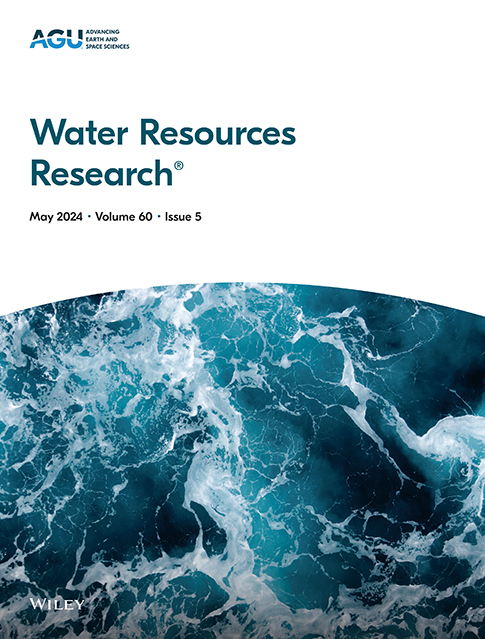一种预测冻融过程中土壤导电性的毛细吸附力模型
IF 4.6
1区 地球科学
Q2 ENVIRONMENTAL SCIENCES
引用次数: 0
摘要
了解土壤导电性随温度的变化是预测寒区地下水流动和溶质运移的关键。冻融循环过程中最常用的水力传导性模型只考虑土壤中毛细水的流动,而忽略了沿颗粒表面周围薄膜流动的水。本文在全水分范围非饱和土导电性模型的基础上,利用土壤冻融过程和干湿过程的类比,通过Clausius-Clapeyron方程提出了新的冻土导电性模型。新模型采用单一方程来描述毛细力和吸附力导致的电导率行为,从而考虑毛细水和土壤周围薄液膜的影响。通过与已有模型的比较,结果表明,新模型适用于各种类型的土壤,预测的水力导率与实测数据吻合度最高,与van Genuchten-Mualem模型相比,均方根误差降低了38.9%。最后,用热水文基准问题和室内实验结果对新模型进行了验证。基准结果表明,考虑毛细力和吸附力时,对流换热更显著,相变完成时间比只考虑毛细力时要早。此外,采用新的导热系数表达式建立的流-热耦合模型与室内柱实验结果吻合较好。本文章由计算机程序翻译,如有差异,请以英文原文为准。
A New Capillary and Adsorption‒Force Model Predicting Hydraulic Conductivity of Soil During Freeze‒thaw Processes
Understanding the change in soil hydraulic conductivity with temperature is key to predicting groundwater flow and solute transport in cold regions. The most commonly used models for hydraulic conductivity during freeze‒thaw cycles only consider the flow of capillary water in the soil and neglect water flowing along thin films around the particle surface. This paper proposed a new hydraulic conductivity model of frozen soil via the Clausius–Clapeyron equation based on an unsaturated soil hydraulic conductivity model over the entire moisture range using an analogy between freeze‒thaw and dry‒wet processes in soils. The new model used a single equation to describe the conductivity behaviors resulting from both capillary and adsorption forces, thus accounting for the effect of both capillary water and thin liquid film around soil. By comparison with other existing models, the results demonstrated that the new model is applicable to various types of soils and that the predicted hydraulic conductivity is in the highest agreement with the observed data, while reducing the root mean square error by 38.9% compared to the van Genuchten–Mualem model. Finally, our new model was validated with thermal–hydrological benchmark problem and laboratory experiment result. The benchmark results indicated that the advective heat transfer was more significant, and the phase change was completed earlier when considering both capillary and adsorption forces than when only considering capillary forces. Furthermore, the coupled flow–heat model with the new hydraulic conductivity expression replicated well the results from a laboratory column experiment.
求助全文
通过发布文献求助,成功后即可免费获取论文全文。
去求助
来源期刊

Water Resources Research
环境科学-湖沼学
CiteScore
8.80
自引率
13.00%
发文量
599
审稿时长
3.5 months
期刊介绍:
Water Resources Research (WRR) is an interdisciplinary journal that focuses on hydrology and water resources. It publishes original research in the natural and social sciences of water. It emphasizes the role of water in the Earth system, including physical, chemical, biological, and ecological processes in water resources research and management, including social, policy, and public health implications. It encompasses observational, experimental, theoretical, analytical, numerical, and data-driven approaches that advance the science of water and its management. Submissions are evaluated for their novelty, accuracy, significance, and broader implications of the findings.
 求助内容:
求助内容: 应助结果提醒方式:
应助结果提醒方式:


